Internal linking is a critical aspect of SEO and website performance. It involves linking pages within a website to improve search engine rankings and user experience.
By creating a well-structured internal linking strategy, website owners can ensure that all pages are easily discoverable by search engines and users, distribute link equity across the website, and improve navigation, reducing bounce rates and increasing user engagement.
Overall, internal linking is a simple but effective way to boost search engine rankings and drive organic traffic to a website.
Definition and Characteristics of Contextual Internal Links
Contextual internal links have a unique position due to their inherent connection to the content.
They are distinct from other types of internal links, such as navigational and footer links, and are precisely placed within the content to provide users with access to additional, relevant information that enhances their understanding of the topic.
In an effective internal linking strategy, contextual internal links serve both SEO and usability purposes. By weaving links into a page’s primary content, they provide relevance to the topic being discussed and enable search engines to better understand the connections between pages and their significance within the website’s structure.

Characteristics of contextual internal links include:
Relevance: The linked pages are closely related to the topic discussed in the content.
Placement: They are positioned within the main content, making them easily accessible and visible to readers.
Anchor text: The anchor text is descriptive and accurately represents the linked content.
User value: They enhance the user experience by providing additional, related information.
SEO value: They provide relevance and context to connected content that helps search engines understand the relationship between pages and their importance.
Strategies for Leveraging Contextual Internal Links
1. Optimizing Anchor Text
Anchor texts provide context for internal links.
Using descriptive and relevant anchor text, you can guide users to relevant content and signal the importance of the linked page to search engines.
For example, instead of using generic phrases like “click here” or “read more,” keyword-rich anchor texts, like “internal linking best practices for 2024,” provides more context and value to the users and search engines. Even before you click the article, you already know what to expect on the page.
Optimizing anchor text results in a more informative, user-friendly experience. This also boosts relevancy scores which may positively impact rankings.
2. Creating Valuable and Relevant Content Clusters
Content clusters, or silos, organize related content on a website into groups or categories. Doing this creates a thematic structure that helps search engines understand the scope and focus of your website’s content.
Content clusters consist of a central pillar page covering a broad topic and several supporting pages (cluster content) targeting long-tail keywords and exploring subtopics in more detail.
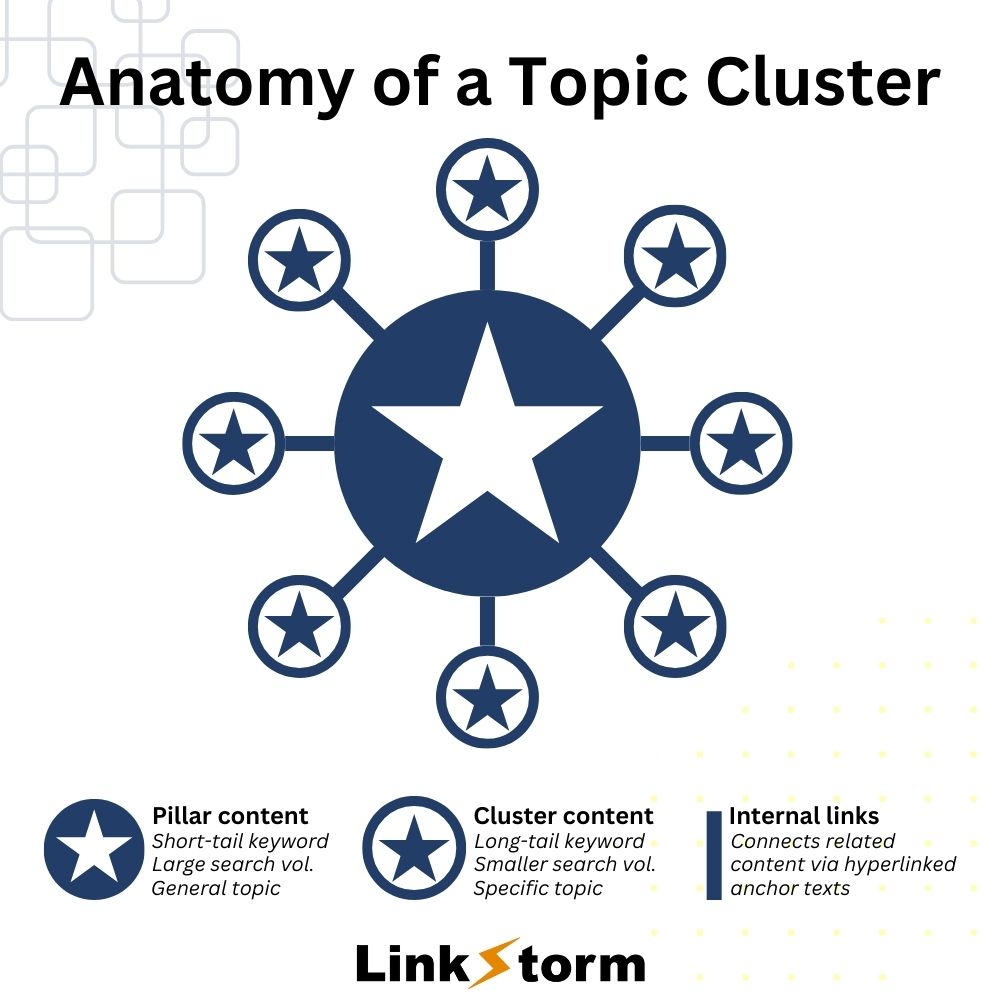
For example, this article is a cluster content around our pillar post: Complete Guide to Internal Linking. If you check that article, you’ll find that we only talked about contextual internal linking briefly because this article is supposed to dive deep into that topic.
Content clusters and contextual internal linking work together to create a more organized and interconnected website structure. By creating content clusters and implementing contextual internal linking within those clusters, you can:
- Improve the overall topical relevance and authority of your website in the eyes of search engines.
- Distribute essential link juice more efficiently across your site, as the links from the pillar page pass authority to the supporting pages.
- Reduce click depth throughout a website or the number of clicks needed to reach a desired web page.
Imagine you have a website about healthy living. You create content clusters (silos) around three central topics: nutrition, exercise, and mental health.
Pillar Pages (Central Topics):
A. Nutrition: “The Ultimate Guide to Healthy Eating”
B. Exercise: “The Complete Guide to Effective Exercise”
C. Mental Health: “The Comprehensive Guide to Mental Well-being”
Related Pages (Subtopics):
A. Nutrition: “Benefits of a Plant-based Diet,” “Superfoods for Better Health,” “How to Count Macros”
B. Exercise: “Strength Training Basics,” “Cardio Workout Plans,” “Flexibility and Mobility Exercises”
C. Mental Health: “Managing Stress,” “The Importance of Sleep,” “Mindfulness Techniques”
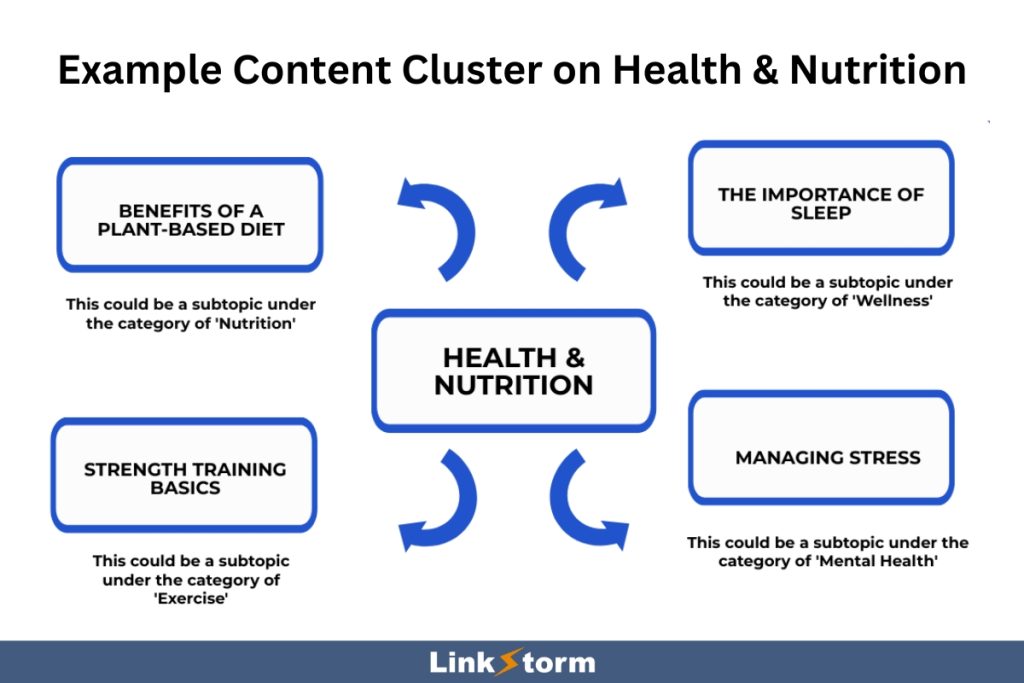
Now, to establish the relationship between content silos and contextual internal linking, you would link the related pages (subtopics) to their respective pillar pages and to each other.
Example of contextual internal linking:
In the “Benefits of a Plant-based Diet” article, you could include a contextual internal link to the “Superfoods for Better Health” article using anchor text like “incorporate superfoods into your plant-based diet.”
By analyzing existing content and internal links, publishers and agencies can analyze their website’s content and internal linking structure to identify potential silos.
3. Regularly Auditing Internal Links for Effectiveness and Issues
Regularly auditing your website’s internal links is crucial for maintaining a well-organized, user-friendly site that search engines can crawl and index.
- Broken Links: One of the most common issues with internal links is broken or dead links. For example, a website selling home appliances may have an internal link to a page that no longer exists, resulting in a 404 error. To fix this issue, the website owner can use a link checker tool to identify broken links and replace them with working links to relevant content, such as updated product pages or related blog posts.

- Poor Link Placement: Poor link placement can harm the user experience and SEO. For example, let’s say a website offers online courses but the course links are buried deep within long paragraphs of text. This makes it difficult for users to find the internal links. To fix this issue, you can opt to placing important links above or at the beginning of a content. Limiting the number of links on a page may also be helpful.
Learn more: How Many Internal Links Per Page is Good Enough.
Harnessing the Power of Linkstorm for Contextual Internal Linking
1. Getting a Complete Picture of Your Internal Linking Structure
Having a comprehensive understanding of your website’s internal linking structure is vital to optimizing your internal linking strategy. By analyzing your site’s internal links, you can identify gaps, patterns, and opportunities for improvement, ultimately leading to higher search engine rankings and a better user experience.
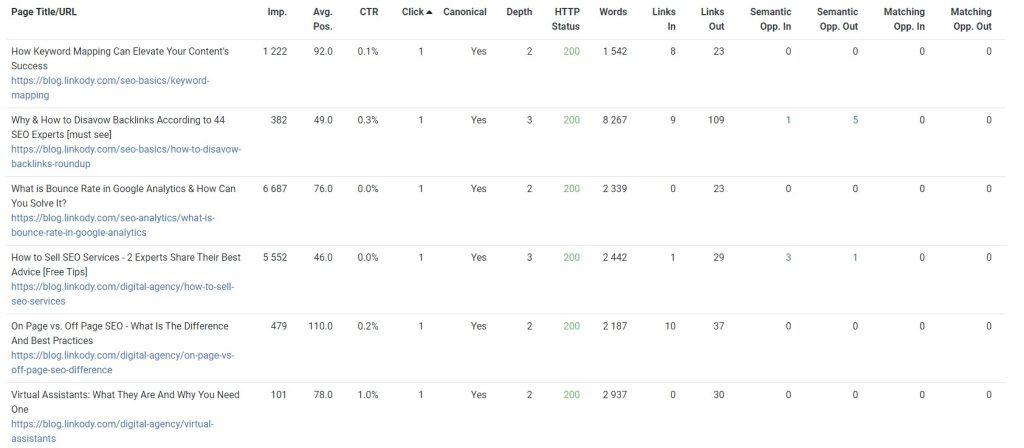
Linkstorm provides a visual representation of your site’s internal links, making it easy for digital marketing professionals and SEO experts to identify areas of improvement and optimize their internal linking strategy accordingly.
2. Finding New Internal Link Opportunities
Linkstorm offers a solution for optimizing your internal linking efforts by identifying new opportunities for contextual internal links. By analyzing your website’s content, the tool can suggest relevant connections between pages, improving the site’s organization.
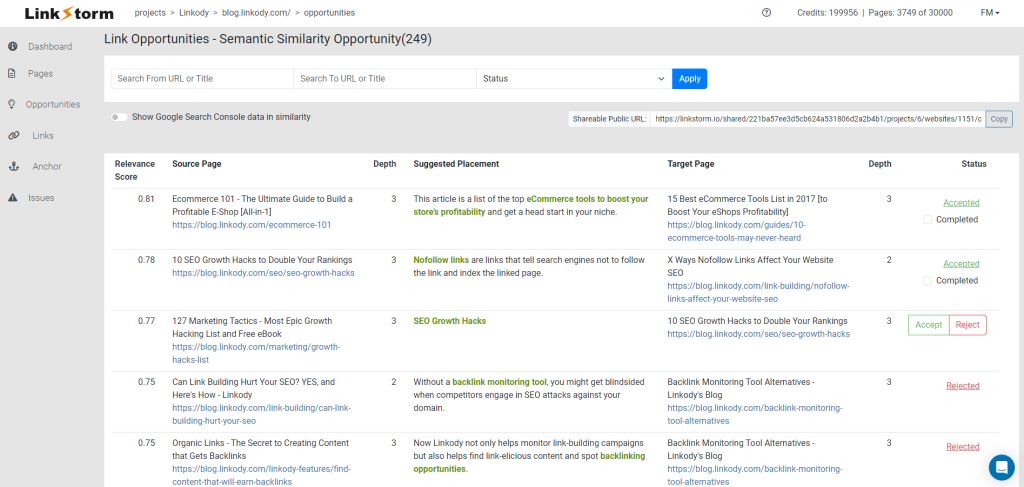
3. Fixing Internal Link Issues
Broken or outdated internal links can negatively impact both user experience and search engine rankings. Linkstorm lets users quickly identify and fix internal link issues by scanning their websites for broken links.
By addressing these issues promptly, you can maintain a well-organized, user-friendly website that search engines can easily crawl and index.
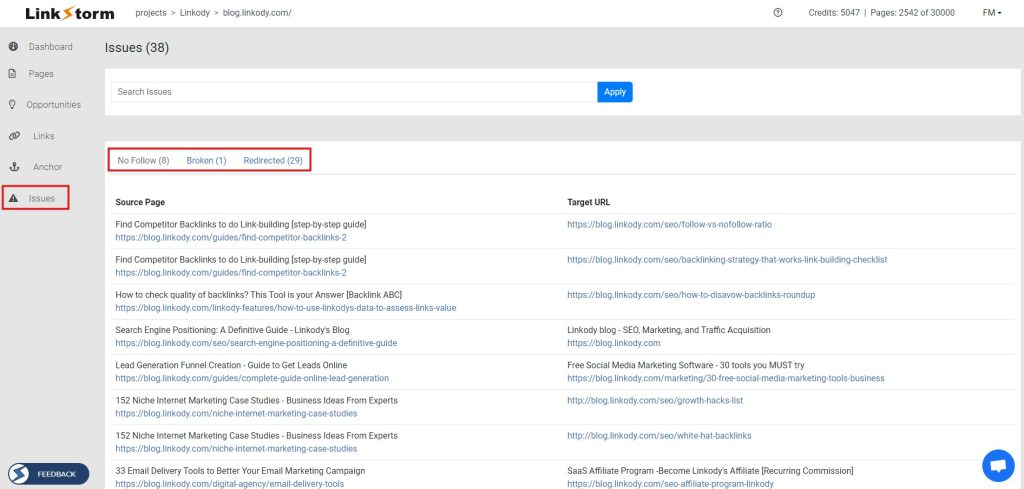
4. Optimizing Internal Link Anchors
Optimizing anchor text is a crucial aspect of contextual internal linking. Linkstorm allows users to analyze and optimize their internal link anchors, ensuring they are descriptive and accurately represent the linked content.
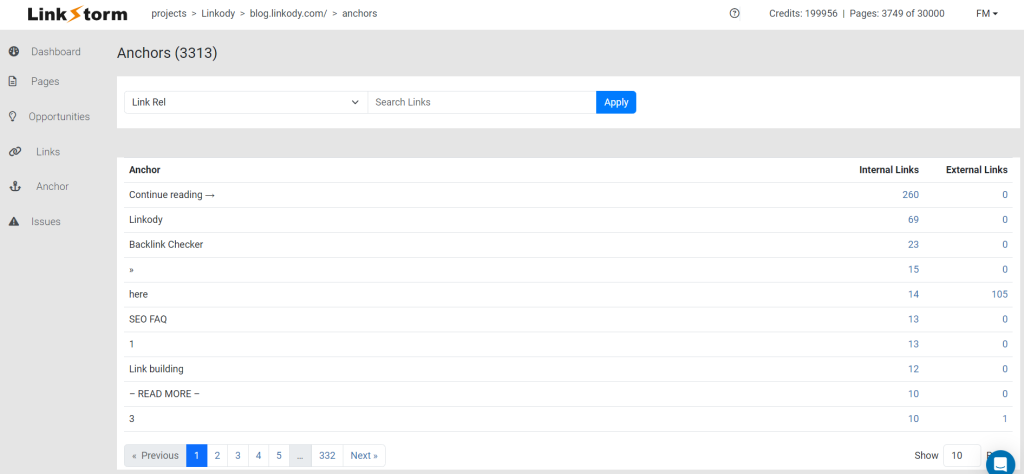
5. Building Links Between All Your Sites
Building links between all your sites, or cross-linking, can help increase the visibility and authority of your websites by leveraging the existing authority of one site to benefit the others.
As opposed to purely internal linking, cross-linking means a site builds pertinent external links (and vice versa) to a ‘sister domain.’ This allows the mutual transfer of authority between the websites.
Related: Internal Links vs. External Links Explained!
It is essential to use cross-linking wisely, as excessive or manipulative linking can lead to search engine penalties.
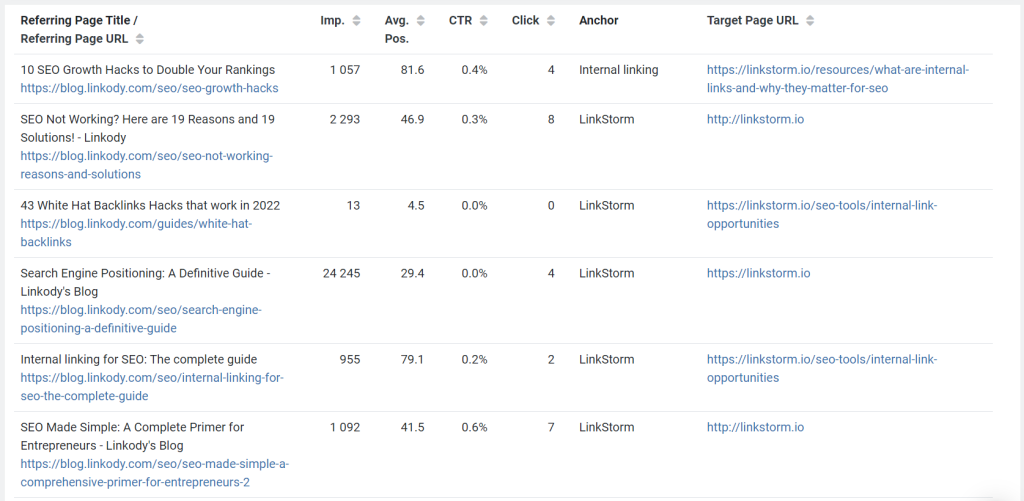
Keep the following considerations in mind:
Relevance: Ensure that the links between your websites are contextually relevant and add value to the user experience. Linking unrelated sites can confuse visitors and negatively impact your SEO efforts.
Natural Linking: Avoid excessive cross-linking or creating unnatural link patterns, as search engines see this as manipulative. Focus on creating natural, meaningful connections between your websites that provide genuine value to users.
Anchor Text: Use descriptive and varied anchor text that accurately reflects the content of the linked pages, making it easier for both users and search engines to understand the context of the links.
A cross-linking feature has been on LinkStorm’s roadmap from the very beginning. The tool’s internal link opportunities tab already provides robust and intelligent link suggestions throughout a website. We can rest assured that once the cross-linking gets released from beta phase, it will perform just as effectively.
Armed with a cross-linking tool, users can easily simplify the process of creating, organizing, and analyzing links between websites.
Conclusion
Linkstorm is a powerful tool that can significantly assist agencies, publishers, and SEO experts in optimizing their contextual internal linking strategies.
By providing a complete picture of your internal linking structure, finding new link opportunities, fixing internal link issues, optimizing anchors, building links between all your sites, and targeting custom keywords, Linkstorm helps users harness the full potential of contextual internal links for better user experience and search engine rankings.
 Written by Dishant Bhatt
Written by Dishant Bhatt